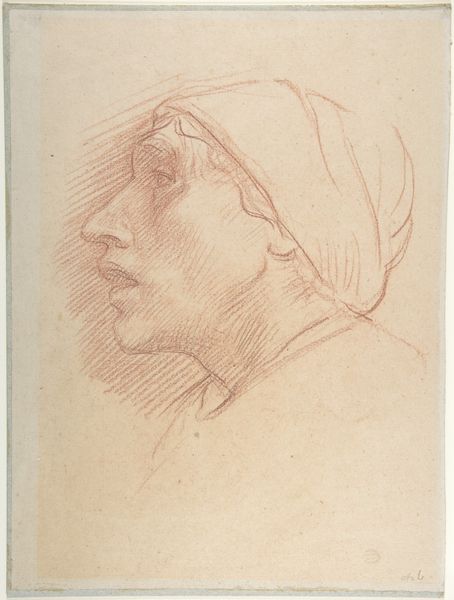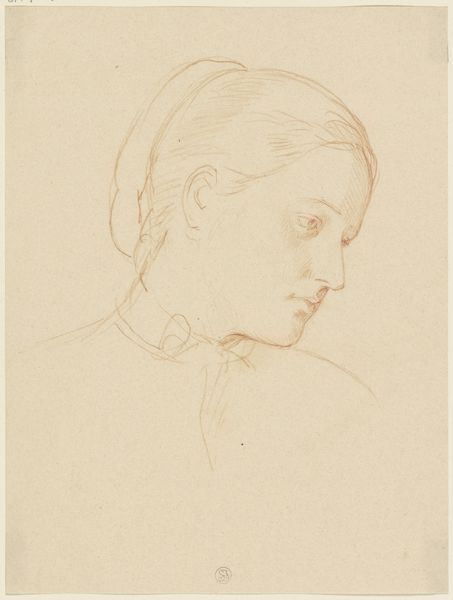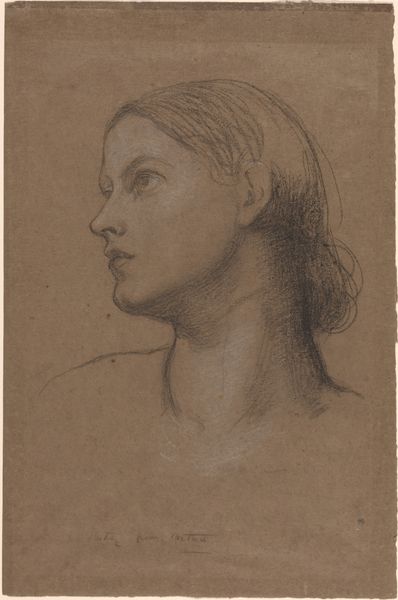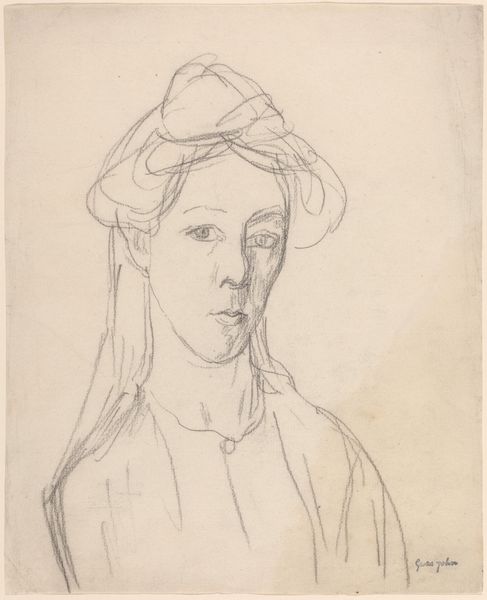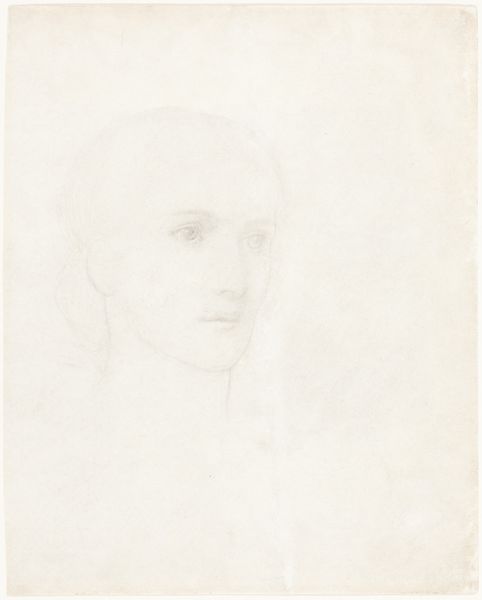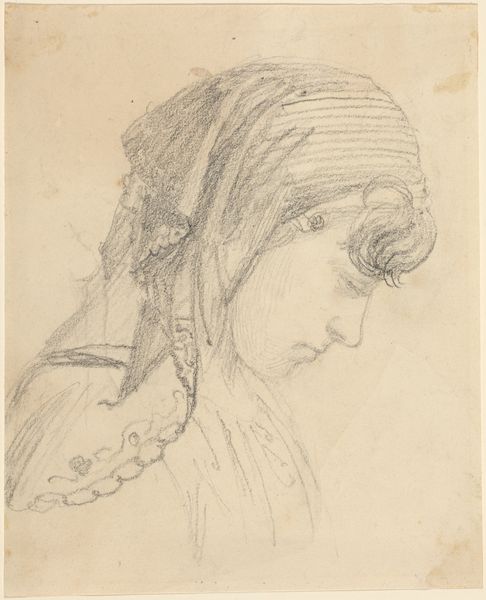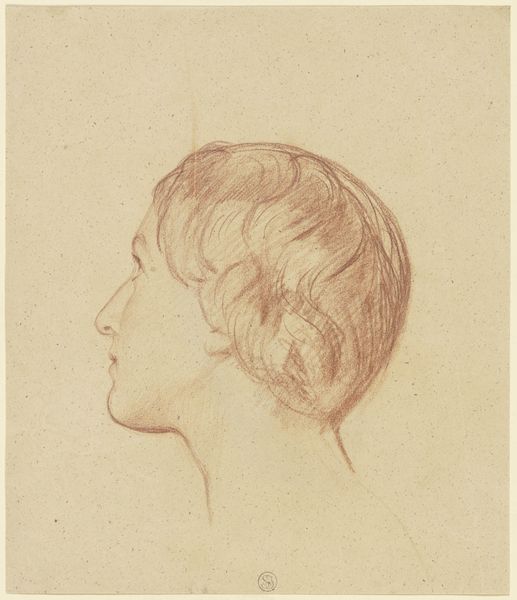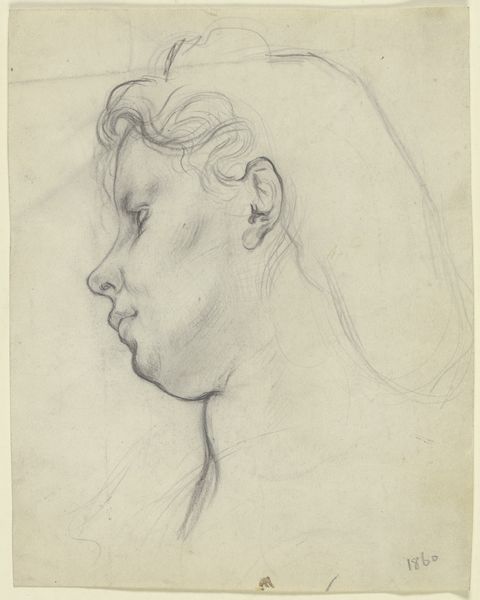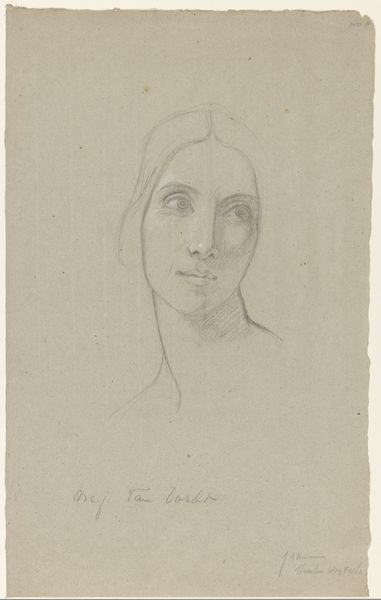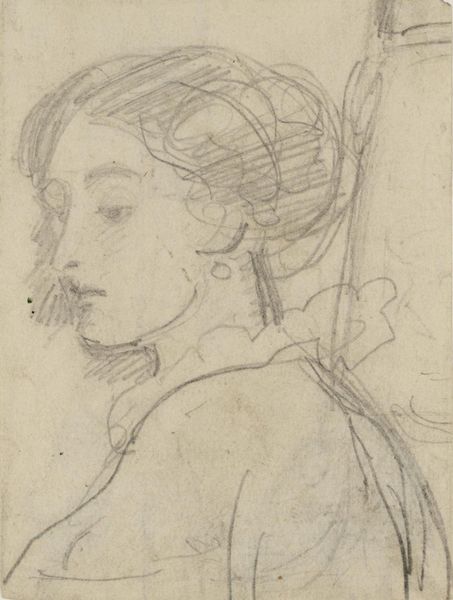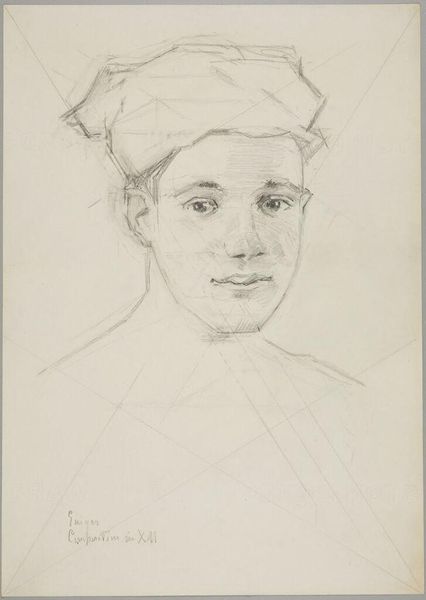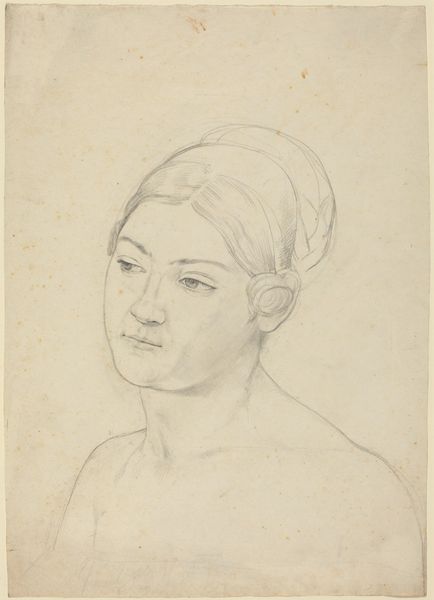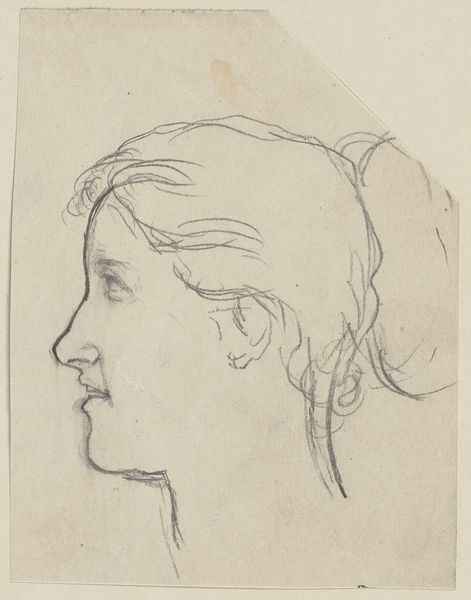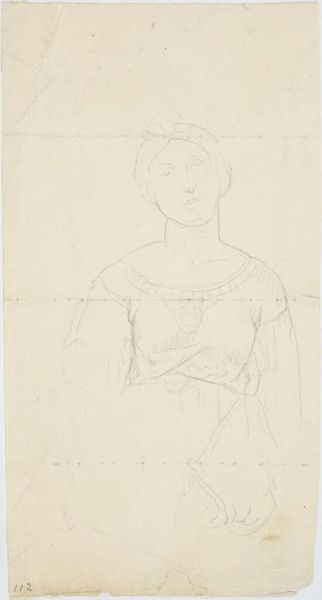
drawing, paper, pencil
#
portrait
#
drawing
#
impressionism
#
pencil sketch
#
paper
#
pencil drawing
#
pencil
#
portrait drawing
#
realism
Dimensions: height 248 mm, width 167 mm
Copyright: Rijks Museum: Open Domain
Curator: I'm immediately struck by the intimacy of this portrait. It's just a simple pencil sketch, yet there's such a quiet presence about her. Editor: Absolutely. We are looking at "Portret van een vrouw," or "Portrait of a Woman," created with pencil on paper. The work's creation is dated from 1834 to 1911 and is attributed to Jozef Israëls. It's currently held here at the Rijksmuseum. Curator: Israëls captures her so tenderly, almost ethereally, which, considering its time, connects to larger questions about female representation in art. Was he trying to portray inner life? What was it like for women of her class at the time this work was made? Editor: That ethereal quality could also be interpreted through the lens of its likely impressionistic leanings and the subtle use of light. It certainly encourages us to reflect on women's societal roles during that era and how artists participated in representing the nuances of female existence. I see echoes of how women were both idealized and, simultaneously, suppressed during this period. Curator: Exactly. And her gaze... there’s a contemplative quality, almost melancholic. I find myself wondering what she's thinking, dreaming about, and longing for. The lack of details encourages such reveries. Also, let's remember Israëls as a prominent figure within the Hague School, and that brings to mind specific conventions of depicting light, shadow, and mood associated with Dutch realism, so let’s also remember those conventions and that the work reflects those aesthetics as well. Editor: That gaze also pulls us into examining representation itself. How has art been complicit in objectifying the female form? By focusing on such a simple image, Israëls subtly disrupts those conventional, ideal portrayals, encouraging deeper empathy, wouldn’t you agree? Curator: In some respects, certainly. It also resonates on a much deeper level when considering art through the lens of a quiet reflection about life experiences, memory, and human emotions. Editor: Agreed, this invites a potent conversation about the portrayal of women. It asks that we examine these historical and cultural contexts which still affect how women are viewed today. It speaks to what this drawing—seemingly simple on its face—really manages to convey: power.
Comments
No comments
Be the first to comment and join the conversation on the ultimate creative platform.
